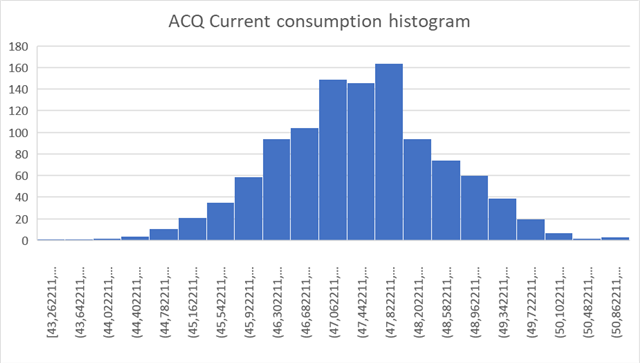Hi folks,
SAADC peripheral gives me good results in acquiring & converting a DC signal related to current consumption.
I am using the 12-bits configuration over the internal reference with 1/5 gain (input signal ranging from 0 to 3v). We perform sampling at 1Khz thanks to the blocking procedure named nrf_drv_saadc_sample_convert at a 10us sampling time
At this stage, if softdevice is off, we got a normal measurement and plotting histogram of the several measures shows a normal distribution according to the noise error gaussian form.

Sounds good!
However, just by starting softdevice (+8dbm level selected), things are starting to go wrong since extra noise is added to the initial signal resulting in the following histogram (do not look at absolute values which change from the previous picture):

As we see, a second noise pattern is visible on the right part giving me wrong results when averaging acquired samples.
I am using softdevice 7.0.1 and I was asking myself what kind of trick could I use to overcome this chip noise issue?
Is it chip noise issue due to radio event?
Thank you for your answer.
The best



